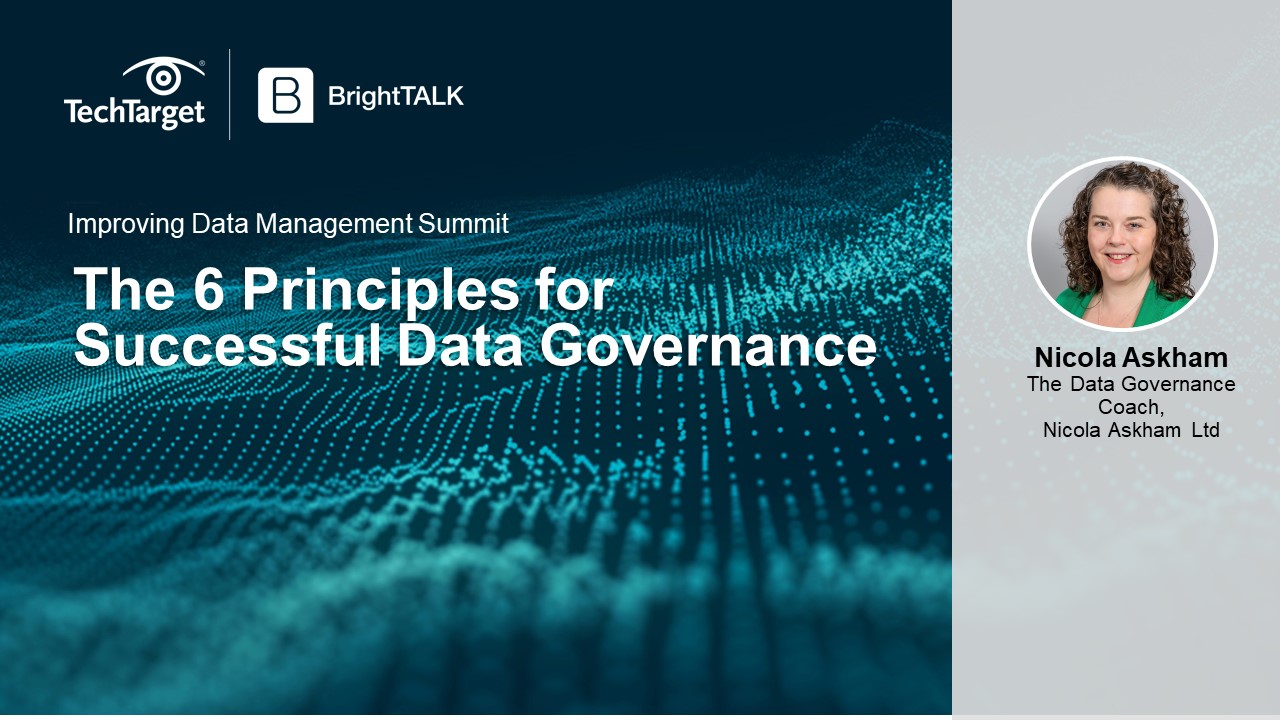The 6 principles for successful data governance
Are you getting started with data governance? Whether you’re about to commission a new initiative or you’ve been tasked with running one, you’re probably feeling overwhelmed. You may have lots of questions like: - Where do I start? - How will I know if I’m doing the right things, at the right time? - What can I expect to get in place in the next 6 months? What will be longer term? This webinar will answer your initial questions about data governance and share six principles that underpin all successful data governance initiatives. You’ll learn: o What to do from the start so you can avoid mistakes which take time and money to resolve o The opportunities data governance will bring to your organization so know why you are doing this and what the wins will be o How to approach your data governance initiative in the right way, so you have a realistic idea of what is involved About the speaker: Known as The Data Governance Coach, Nicola helps organizations understand and manage their data better. For almost two decades she’s helped corporates to reduce costs, inefficiencies and to remain competitive. Typically, people turn to her because their data is a mess, and they need help unravelling it. As well as providing coaching and consulting to help her clients better manage their data, Nicola runs three popular training courses every year, because she feels it is important to give people the skills to make sure that data is used to solve problems and make better informed decisions. Nicola initially worked for a leading UK Bank and moved into consultancy at the beginning of 2009. Nicola is a Director and Committee Member of DAMA UK, she sits on the Expert Panel of Dataqualitypro.com, and regularly writes and presents internationally on data governance best practice. Read More








